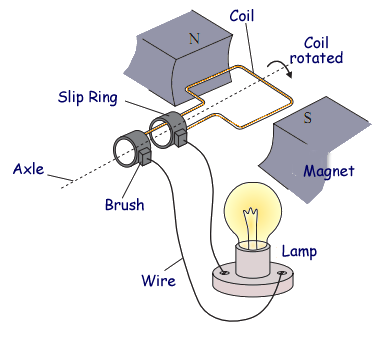Electric Motors: Difference between revisions
No edit summary |
|||
| Line 22: | Line 22: | ||
==Connectedness== | ==Connectedness== | ||
#How is this topic connected to something that you are interested in? | #How is this topic connected to something that you are interested in? | ||
Motors and generators are very similar in the way that magnetic fields are used in both of these devices to generate energy. Motors are heavily used in robotics, which is something that I have been interested in ever since I was on my high school's robotics team. In robotics, we heavily rely upon motors to power the robot and allow the robot to perform as it is supposed to. I am interested in going into the robotics industry, particularly the electronic component of the industry, so knowing how motors work is very useful to me. | |||
#How is it connected to your major? | #How is it connected to your major? | ||
Even though I'm a Computer Science major, I want to eventually go into the robotics industry. In robotics, when coding for any robot, you need to know how the electronic components of the robot are able to produce energy for the robot to function. You need to be able to write code that is able to be translated by the CPU and will allow each controller and motor to function. | |||
#Is there an interesting industrial application? | #Is there an interesting industrial application? | ||
Like I said, motors are heavily used in robotics in order for robots to properly move and carry out the tasks the robot was programmed to do. Robots such as the robotic arm pictured below need motors in order to generate enough power for the arm to move in different directions: | |||
[[File:stacks_image_5796.png]] | |||
==History== | ==History== | ||
Revision as of 16:02, 5 December 2015
This page covers motors and generators
Claimed by Komal Hirani: khirani6
The Main Idea
Electric Motors
Motors convert electrical energy into mechanical energy. Our everyday routines heavily rely upon the electric motors in common applications such as refrigerator compressors, water pumps, elevators, clocks, and cars. Electric motors are a common application of the torque that a magnetic field exerts on a current-carrying coil. In order for motors to function the way that they do, the current-carrying coil needs to turn continuously. In order for the current-carrying coil to turn in such a way, you need to make electrical connections to the coil in such a way that just as it is coming to its stable position, you reverse the direction of the current. A simple way to achieve this continuos motion is through a "split-ring commutator" that automatically changes the direction of the current through the coil at just the right moment. Metal tabs make contact between the battery and the commutator, which allows current to flow and for the motor to rotate.
Below is a picture that shows the overall design of a single-loop motor driven by direct current (DC):
Electric Generators
Generators convert mechanical energy into electrical energy. Commercial generators rotate a loop of wire in a magnetic field rather than moving a bar back and forth. This has the same effect of achieving a charge separation along part of the rotating loop, but rotary motion is much easier to arrange mechanically, and with relatively low friction on the axle.
Examples
Connectedness
- How is this topic connected to something that you are interested in?
Motors and generators are very similar in the way that magnetic fields are used in both of these devices to generate energy. Motors are heavily used in robotics, which is something that I have been interested in ever since I was on my high school's robotics team. In robotics, we heavily rely upon motors to power the robot and allow the robot to perform as it is supposed to. I am interested in going into the robotics industry, particularly the electronic component of the industry, so knowing how motors work is very useful to me.
- How is it connected to your major?
Even though I'm a Computer Science major, I want to eventually go into the robotics industry. In robotics, when coding for any robot, you need to know how the electronic components of the robot are able to produce energy for the robot to function. You need to be able to write code that is able to be translated by the CPU and will allow each controller and motor to function.
- Is there an interesting industrial application?
Like I said, motors are heavily used in robotics in order for robots to properly move and carry out the tasks the robot was programmed to do. Robots such as the robotic arm pictured below need motors in order to generate enough power for the arm to move in different directions:
History
Put this idea in historical context. Give the reader the Who, What, When, Where, and Why.
See also
Are there related topics or categories in this wiki resource for the curious reader to explore? How does this topic fit into that context?
Further reading
Books, Articles or other print media on this topic
External links
Internet resources on this topic
References
https://www.grc.nasa.gov/www/k-12/airplane/thermo0.html http://hyperphysics.phy-astr.gsu.edu/hbase/thermo/thereq.html


